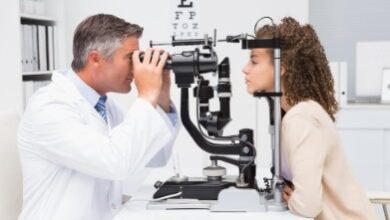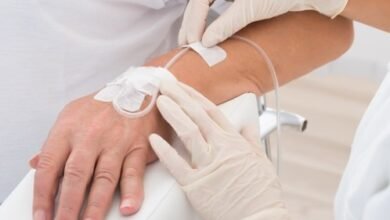
Why Emergency Dental Care Coverage Matters for Everyone
What Is Emergency Dental Care?
Emergency dental care is the immediate treatment required when oral health issues strike unexpectedly and cannot wait for a scheduled appointment. These emergencies often involve intense pain, trauma, infections, or situations that could threaten overall health if not addressed quickly. Common dental emergencies include severe toothaches, knocked-out teeth, cracked or broken teeth, lost fillings or crowns, dental abscesses, and injuries to gums or jaws. The urgent timeline makes these situations distinct from routine dental problems: waiting days or even hours for care can result in complications.
A dental emergency can strike anyone—whether a child on a playground, an adult involved in a minor accident, or a senior dealing with a sudden infection. Having veteran dental insurance or another robust emergency dental coverage is essential for gaining fast access to critical care and minimizing long-term impacts. With adequate coverage, patients are empowered to address emergencies swiftly and focus on recovery. Without it, critical moments can become stressful and pose risks to oral health and overall well-being.
The Prevalence of Dental Emergencies
Dental emergencies are more common than many realize. In the United States, millions visit emergency departments yearly for dental-related issues. According to CDC data, dental emergencies constitute a significant proportion of nontraumatic visits to ERs, highlighting the widespread need for timely care.
Certain populations, such as children, older adults, and individuals with underlying health issues, face higher risks for dental trauma and sudden oral health crises. For example, young children are active and prone to falls, while seniors may have weakened teeth or gums, making injuries or infections more likely. Lack of access to preventive care or insurance can further increase vulnerability to emergencies, as minor dental issues may be left untreated until they become severe.
See also: A Homeowner’s Essential Guide To Prepare For Upcoming Summer Season
Immediate and Long-Term Impacts of Untreated Dental Crises
Leaving a dental emergency untreated can lead to severe pain, infection, and expensive secondary problems. For instance, a minor infection could quickly escalate to a systemic issue requiring hospitalization or, in rare cases, become life-threatening. If a tooth is knocked out or broken and immediate care isn’t sought, saving that tooth may not be possible, resulting in additional restorative procedures. Delayed intervention can also mean greater tooth loss, irreversible damage, or more complex treatment needs.
On top of physical discomfort and health risks, patients without emergency dental coverage often face sizable out-of-pocket expenses for urgent care, creating additional financial stress. Those without insurance may feel pressured to delay or avoid care, exacerbating problems and increasing the likelihood of complications that can profoundly impact both oral and overall health.
How Emergency Dental Coverage Provides Peace of Mind
Emergency dental insurance typically covers a spectrum of sudden issues, from acute infection care and tooth repair to pain relief and trauma management. This coverage ensures you can access professional help without worrying about the cost or delay. It acts as a safety net, providing access when needed most and reducing the mental burden of unforeseen dental issues. Many policies also include coverage for after-hours or weekend emergencies, which can make a crucial difference in how quickly you receive treatment.
For instance, families with comprehensive plans often avoid choosing between immediate care and hefty bills after an accident. Pregnant women, seniors, and veterans especially benefit from robust emergency dental options due to their increased susceptibility to oral health setbacks. Knowing that you and your loved ones have support during a crisis allows you to act quickly and confidently.
What to Look For in Emergency Dental Coverage
Not all dental insurance plans provide the same level of coverage for emergencies. When evaluating your options, look for plans with transparent coverage of urgent treatments, reasonable deductibles, and accessible in-network providers for emergency care. Key questions include: Does the plan cover after-hours visits? What procedures are included? Is there a cap on annual emergency benefits? These details can make a dramatic difference when rapid intervention is crucial.
Consider also whether your provider has a 24/7 helpline, nearby urgent care resources, and straightforward claims processes—these features can make a significant difference in critical moments. Rapid access to customer support and clear instructions on how to proceed during an emergency can decrease stress and potential delays.
Common Myths About Emergency Dental Coverage
A prevalent misunderstanding is that emergency dental coverage is unnecessary, particularly for those who believe emergencies are rare or could be handled by standard insurance. In reality, many basic plans exclude certain urgent procedures. Some policies may only partially cover emergencies, leaving patients to foot a large portion of the bill. It’s also important to recognize that most plans do not cover cosmetic repairs, elective procedures, or pre-existing conditions found during emergencies, leading to denied claims.
Clarifying the scope and limitations of your plan before an emergency strikes helps avoid unpleasant surprises at the most stressful times. Taking time to read policy details, ask questions, and seek clarifications is a proactive strategy that can have a big payoff when unexpected issues arise.
Emergency Preparation: Steps to Take Before You Need Dental Care
The best way to handle a dental emergency is to be prepared. Regular check-ups and preventive care are the cornerstone of reducing risk. Good oral hygiene and routine dental visits significantly decrease the odds of facing an emergency, as many urgent conditions stem from untreated decay or gum disease. Building an emergency dental plan involves knowing your insurance details, keeping contact information for your provider and local emergency dentists, and understanding the steps to take if a crisis occurs.
The American Dental Association offers practical guidance on what qualifies as a dental emergency and how to respond in the moment to protect your oral health. Familiarizing yourself with these guidelines can make an important difference if you or someone in your family experiences sudden dental pain or trauma.
The Bigger Picture of Oral Health and Emergency Coverage
Maintaining strong oral health goes hand in hand with being prepared for the unexpected. Emergency dental coverage is more than a financial safeguard—it’s a proactive step toward comprehensive well-being for you and your family. By reviewing your current benefits, considering upgrades, and making a plan, you can avoid avoidable pain, costly procedures, and long-term complications. Proactivity in this area saves money, supports overall health, and enables you to address emergencies confidently.
Evaluating your insurance options and readiness for emergencies demonstrates your commitment to lifelong health and peace of mind in the face of unforeseen dental troubles. Taking action today—by understanding your policy, seeking out emergency-friendly coverage, and staying proactive—can provide immense relief if and when a dental emergency arises.



